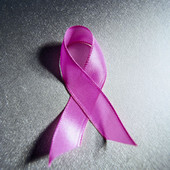
TUESDAY, Sept. 18 (HealthDay News) — The most common and least aggressive form of breast cancer still poses a risk of death more than 10 years after a woman is diagnosed with the disease, according to a new long-term study.
The findings could affect how doctors treat women with this type of breast cancer, the researchers said.
Their 21-year study of nearly 1,000 women in California found that molecular subtypes of breast cancer were important independent predictors of death from breast cancer. In particular, women with luminal A tumors (a subtype of breast cancer generally believed to have the best prognosis) were still at risk for death from the cancer more than 10 years after their diagnosis.
The researchers at Kaiser Permanente Southern California also found that women with HER2-enriched and luminal B tumors were about twice as likely to die from breast cancer than those with luminal A tumors. That result is consistent with previous research.
“The findings of this study indicate that it is important to consider breast cancer molecular subtypes in determining the optimal treatment for women with breast cancer,” study author Reina Haque said in a Kaiser news release. “Women with luminal A tumors — the least aggressive but most common cancerous breast tumor — could benefit from extended treatment to improve their chances for long-term survival.”
The study appeared Sept. 18 in the journal Cancer Epidemiology, Biomarkers & Prevention.
Breast cancer tumors often are divided into four molecular subtypes, the researchers explained in the news release:
- Luminal A, which tends to have the best prognosis with fairly high survival rates.
- Luminal B, which typically occurs in younger women and has a poor prognosis.
- Basal-like subtype, which also tends to occur in younger women, as well as in black women, and has a poor prognosis.
- HER2-enriched subtype, which has a fairly poor prognosis and is prone to early and frequent recurrence and metastases (the spread of the disease to other parts of the body).
Of the four subtypes, luminal A accounts for between 42 percent and 59 percent of all breast cancer cases, the release noted.
“These and earlier findings strongly support molecular subtypes as important independent predictors of breast cancer mortality,” Haque said. “It is important for women with breast cancer — even those diagnosed with the least aggressive form of the disease — to be an advocate for their own health and speak to their doctors about treatment options.”
More information
The American Cancer Society has more about breast cancer.

